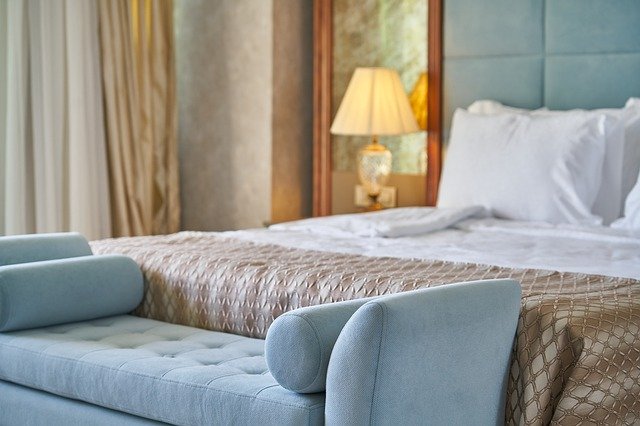According to data reported by the Hotel Data New Zealand hotels in New Zealand’s main markets reached 80 per cent occupancy for the first time in three years in March.
While occupancies were short of the average 89 per cent compared to March 2019, HDNZ estimates that total demand, measured by room nights sold exceeded demand in March 2019 by around 4 per cent, with occupancy impacted by a supply increase of circa 15 per cent.
Revenue Per Available Room (RevPAR) was up by 4 per cent due to a 15 per cent increase in the Average Daily Rate compared to March 2019. RevPAR was strong in the first Quarter, coming in just short of one point of the first quarter in 2019. Four out of eight key markets exceeded 2019 levels.
Tourism recovery is still ongoing, however according to provisional data from Stats NZ, arrivals of non-New Zealand citizens during the first quarter reached 69 per cent of levels reported for the same period in 2019.
Arrivals from Australia and North America showed the strongest recovery. In March, arrivals from China and other countries showed an increase. The latest available data re holiday visitor arrivals showed a 60 per cent recovery in January compared to the same month in 2019.
Occupancy levels in most centres are well below compared to 2019, this is mostly the result of significant supply increases in key markets such as Auckland (+23 per cent), Christchurch (+24 per cent), Queenstown (+23 per cent) and Wellington (+11 per cent).
Based on reported occupancy levels and supply increases since March 2019, HDNZ estimates that hotel demand, measured by room nights sold, during the first quarter has exceeded pre-pandemic demand in Auckland, Christchurch, and Queenstown.
Auckland hotel demand has been increased by a strong calendar of events including entertainment at Spark Arena, Eden Park and Mt Smart Stadium. Ironically, Auckland Council has called for submissions on its proposed budget for the 2023/24 year, under which it is proposing to effectively end its event attraction and destination marketing activities – a decision that would be out of step with similar destinations overseas given where we are in tourism recovery.
Flight delays and change of visitors from impacted regions (Northland and Hawke’s Bay) also generated increased demand for hotels and other commercial accommodation.
Auckland
Approximately 19 per cent of Auckland motel capacity in January and February was unavailable for overnight accommodation according to data from the Accommodation Data Program. This represents approximately 825 motel rooms, many of which are thought to be in use for emergency/social housing.
Furthermore, the number of Airbnb listings in Auckland in March were 40 per cent less than in March 2019, a reduction in capacity of more than 1000 listings, 523 of which were classified as “entire place”, according to AllTheRooms, a global provider of short term rentals and Airbnb analytics.
HDNZ expects these alternative supply-side factors will have had a considerable positive impact on hotel demand, particularly in the 3-4 star segment which, based on estimates have seen an increase in room demand of circa 21 per cent in the first quarter compared to the same period in 2019. Reported occupancy data and market feedback also suggests a shift of demand from older 4.5 star hotels to the newly opened 5 star and 4 star properties.
Christchurch
Christchurch hotels achieved an average occupancy of 86 per cent in March, despite relatively low activity at Te Pae over the summer months, and a lower than expected demand boost from the Sail GP event. Hotels have reported a strong increase in leisure groups from Europe and North America, and high demand from business meetings and leisure FIT guests. Some CBD hotels reached occupancy levels in excess of 90 per cent.
Queenstown
Demand for Queenstown hotels continued to be driven by further increases in air capacity from Australia, with Queenstown Airport reporting 10 per cent more international arrivals during the first three months of 2023 compared to the same period in 2019.
Occupancy levels varied between hotels, with many properties still not able to sell all their rooms due to staff shortages and rooms being used to accommodate staff.
Rotorua
Occupancy levels in Rotorua were mostly impacted by the lack of visitors from China, which before COVID-19 made up circa 20 per cent of total occupancy, and the adverse weather events in January and February.
Staff shortages
Several hotels continue to be impacted by staff shortages which prevents them from selling all available rooms on high demand days. ADR growth compared to 2019 appears to have stabilized, with an average growth of 14.4 per cent during the first quarter of 2023, although with considerable variance by market. In most markets, this rate growth is below the increase in wage rates which for typical front-line jobs have increased by between 30 per cent to 35 per cent over the past three years.
Growing recovery
As inbound air capacity continues to recover over the next six months, so will the recovery of hotel demand. Inbound leisure visitors in particular, along with continuing recovery of business event demand is expected to fill more of the available new hotel capacity, allowing growth in ADR outside the peak season as occupancies rise, especially in the main centres.



